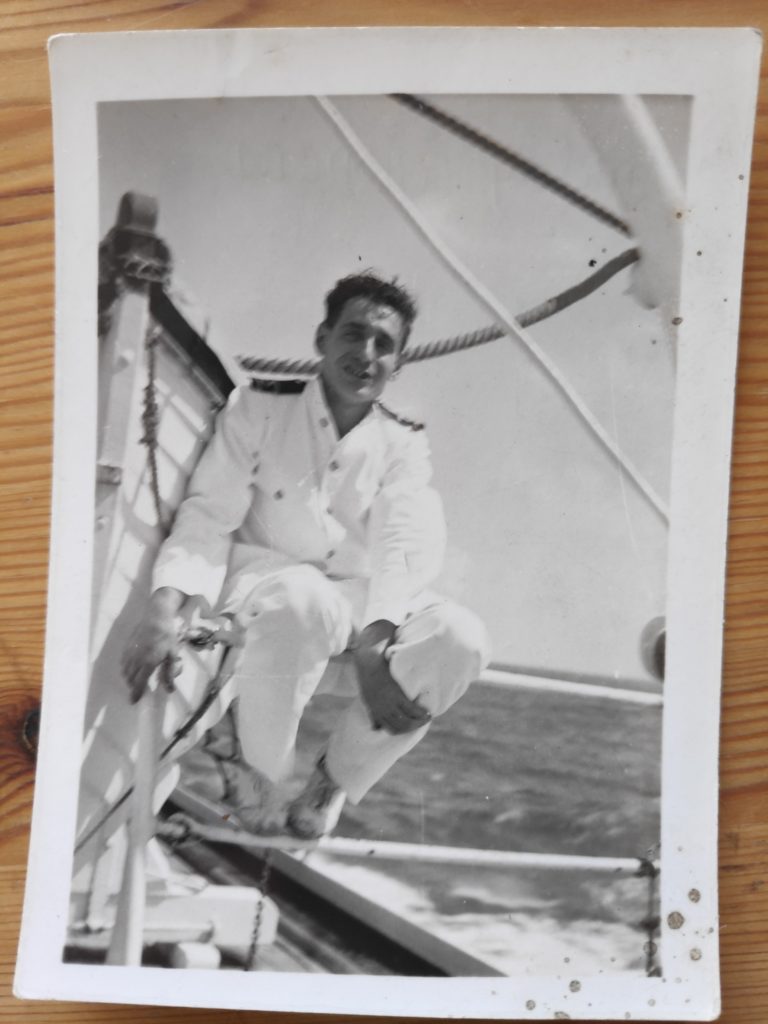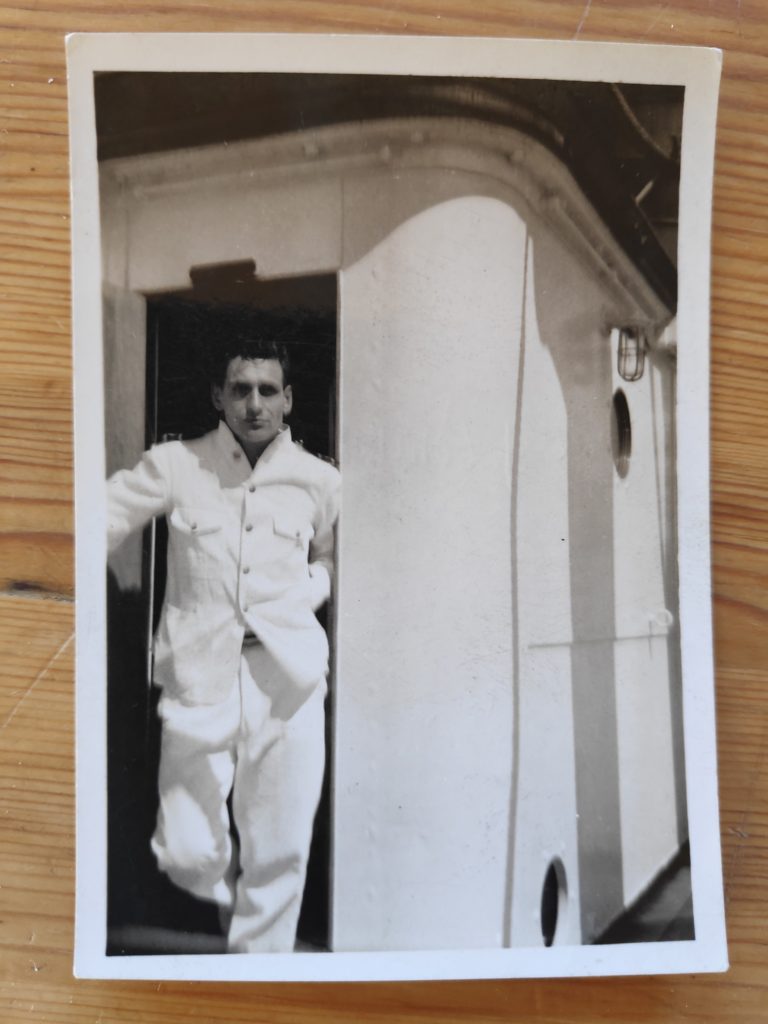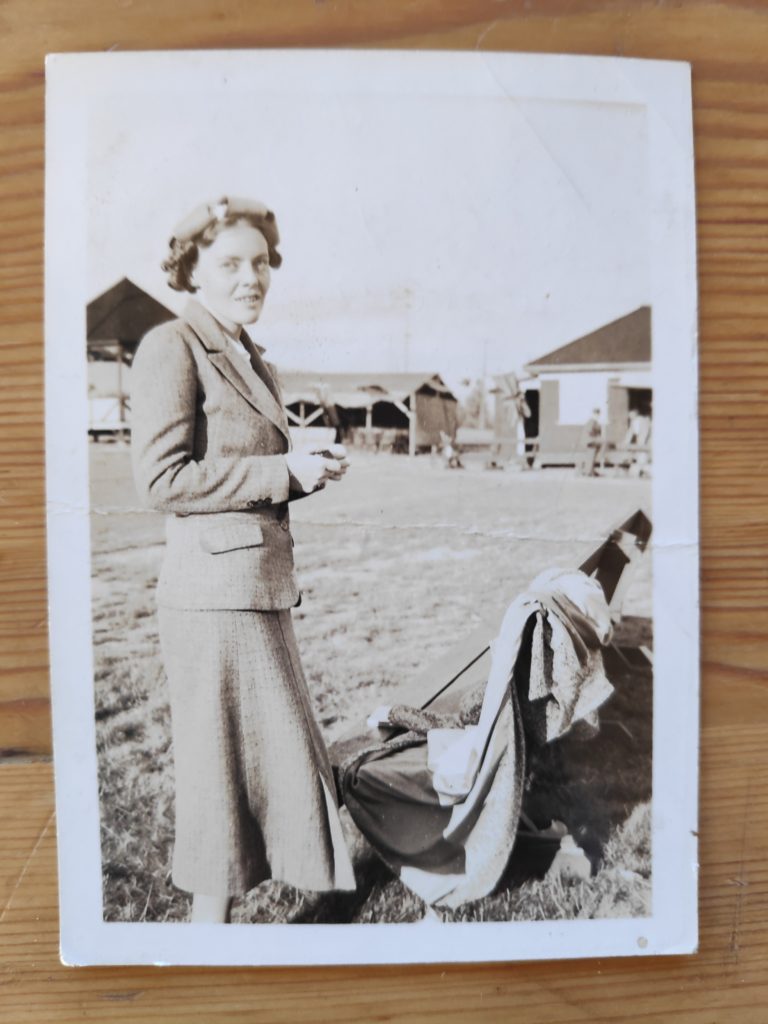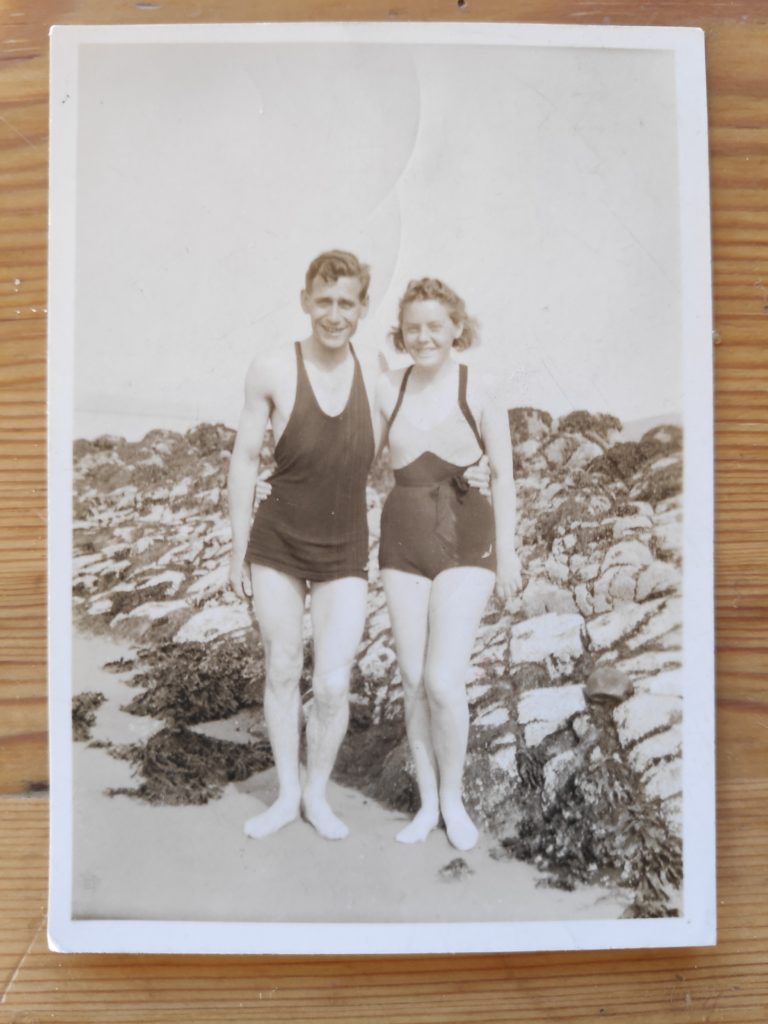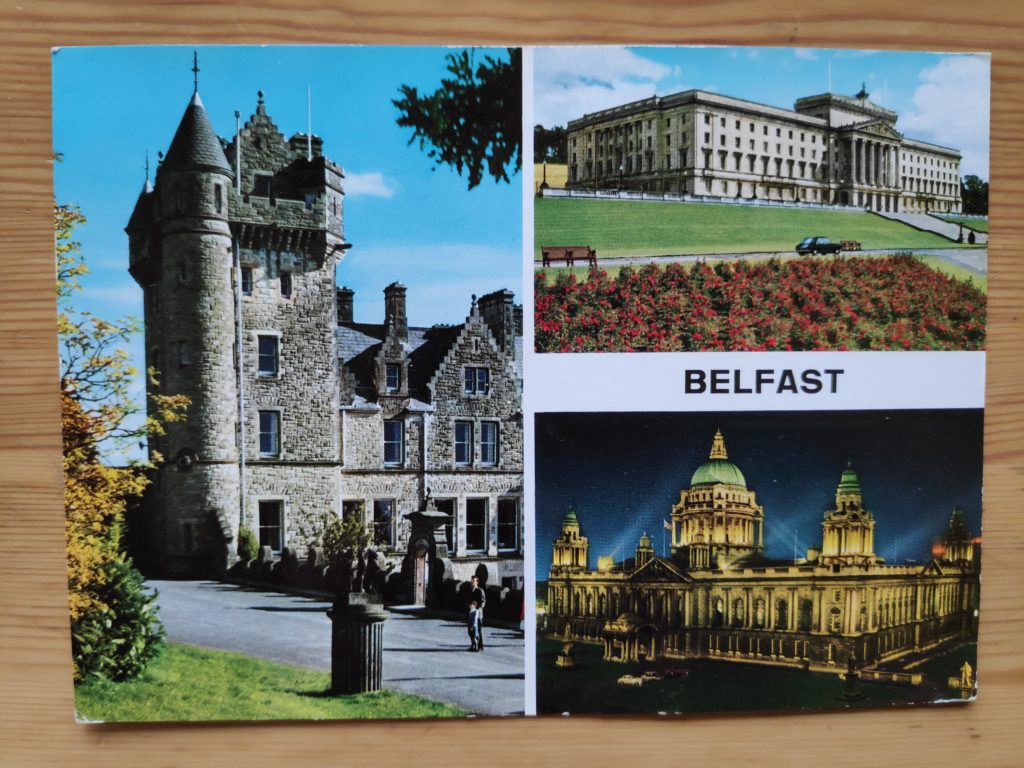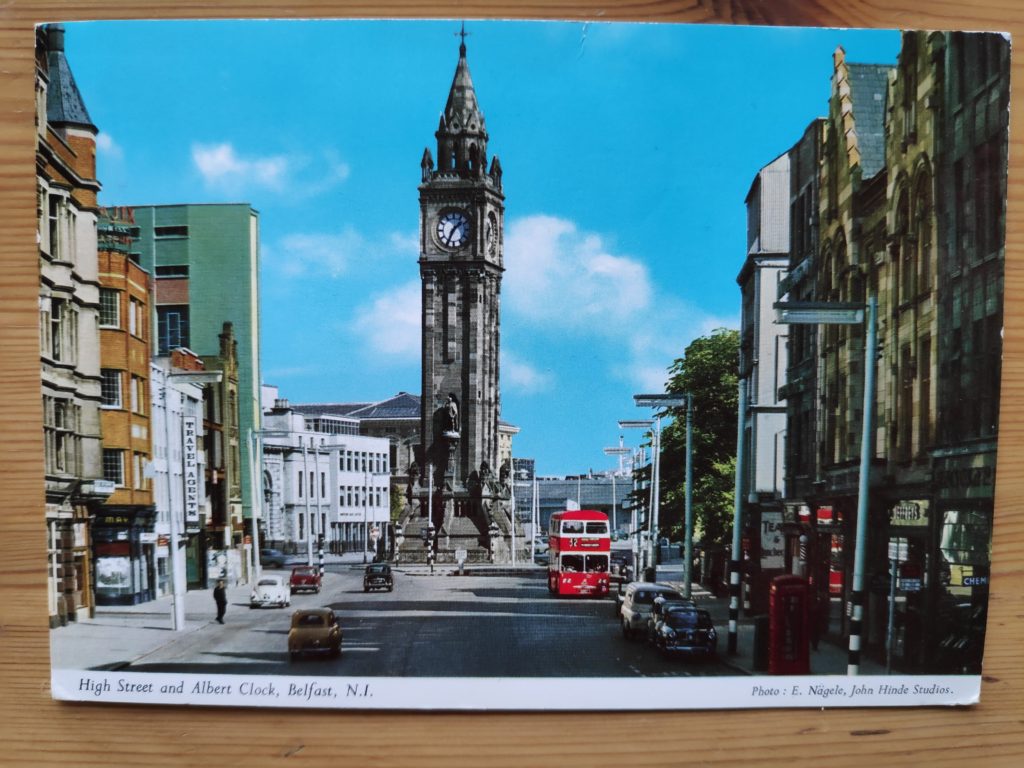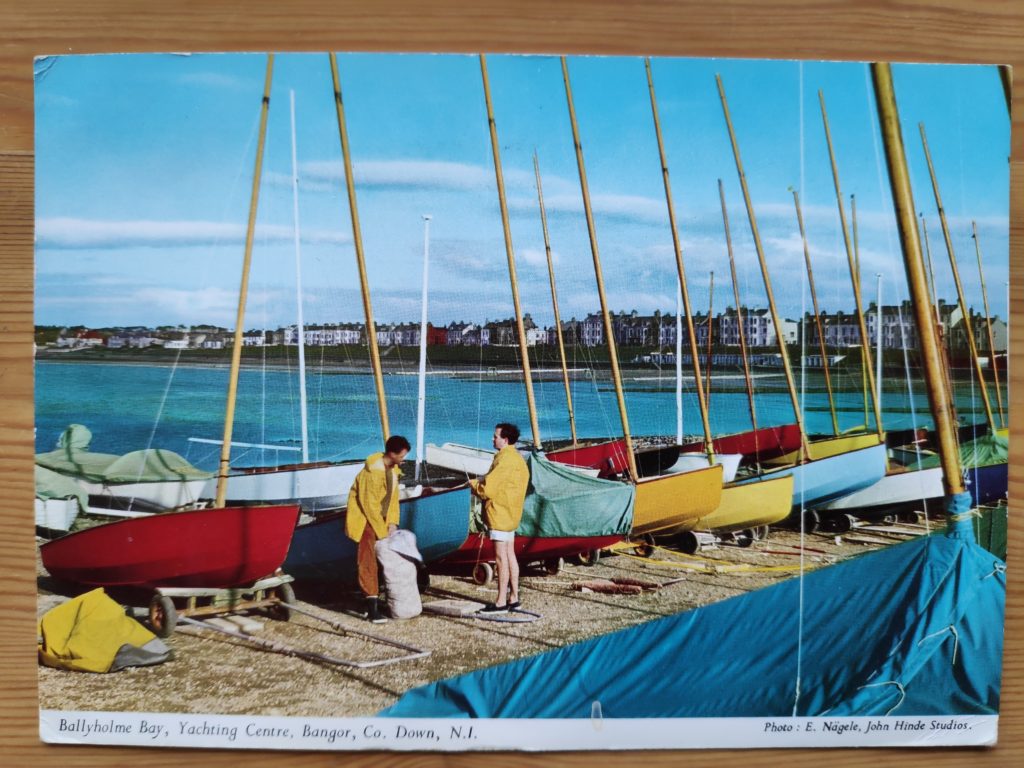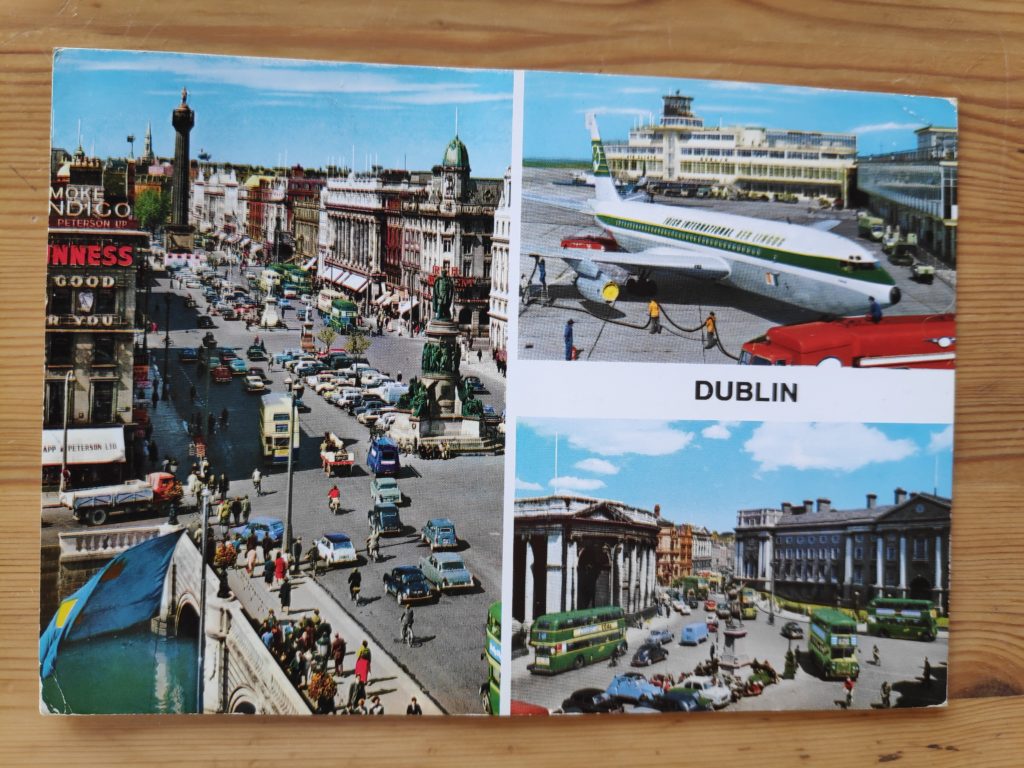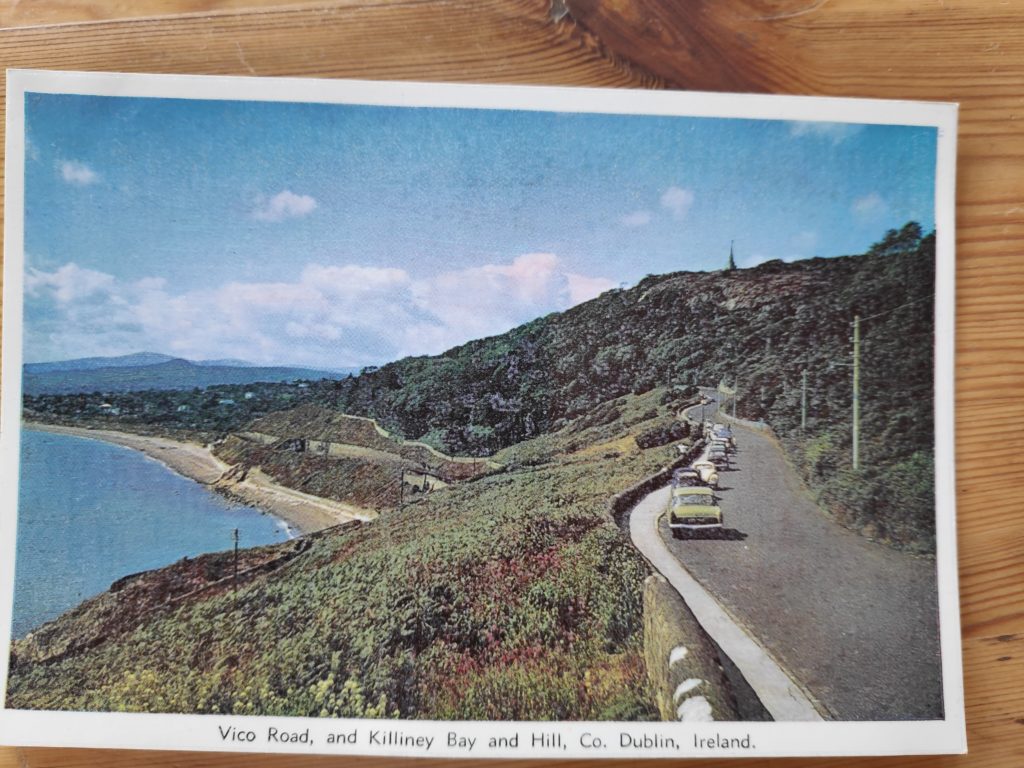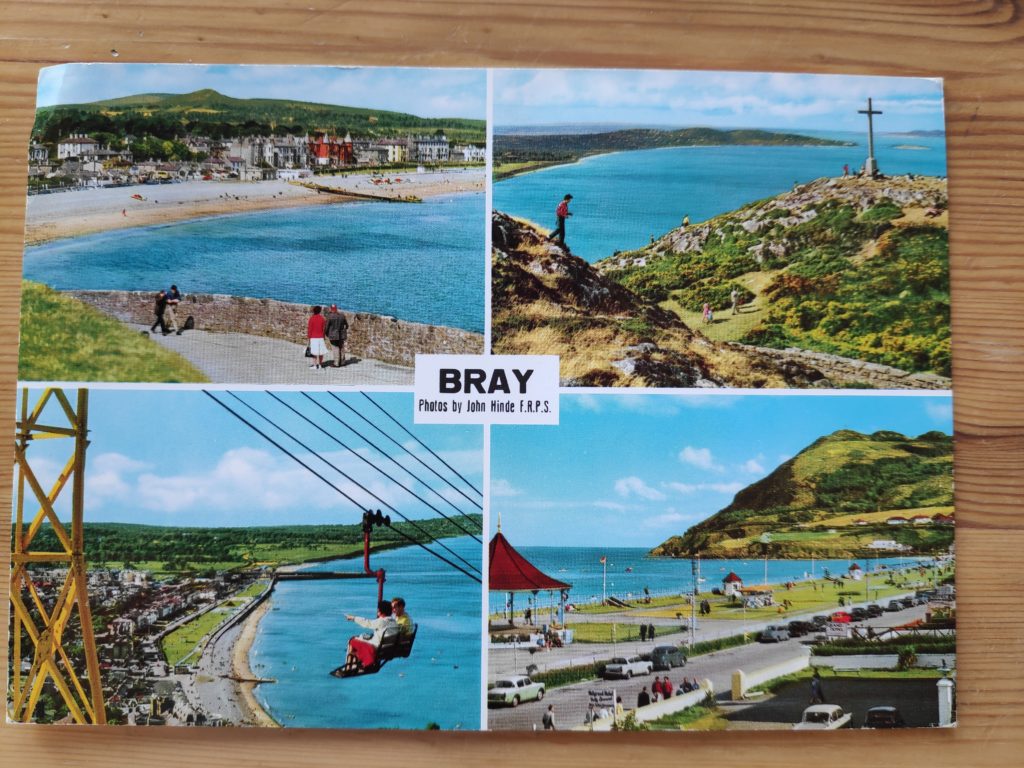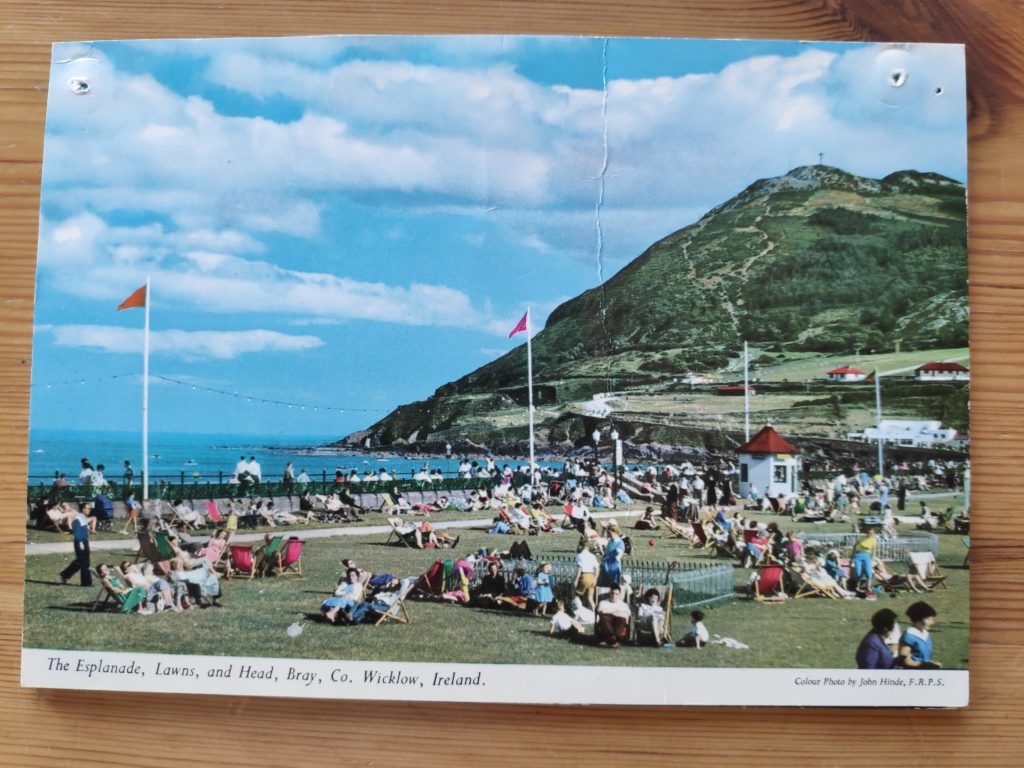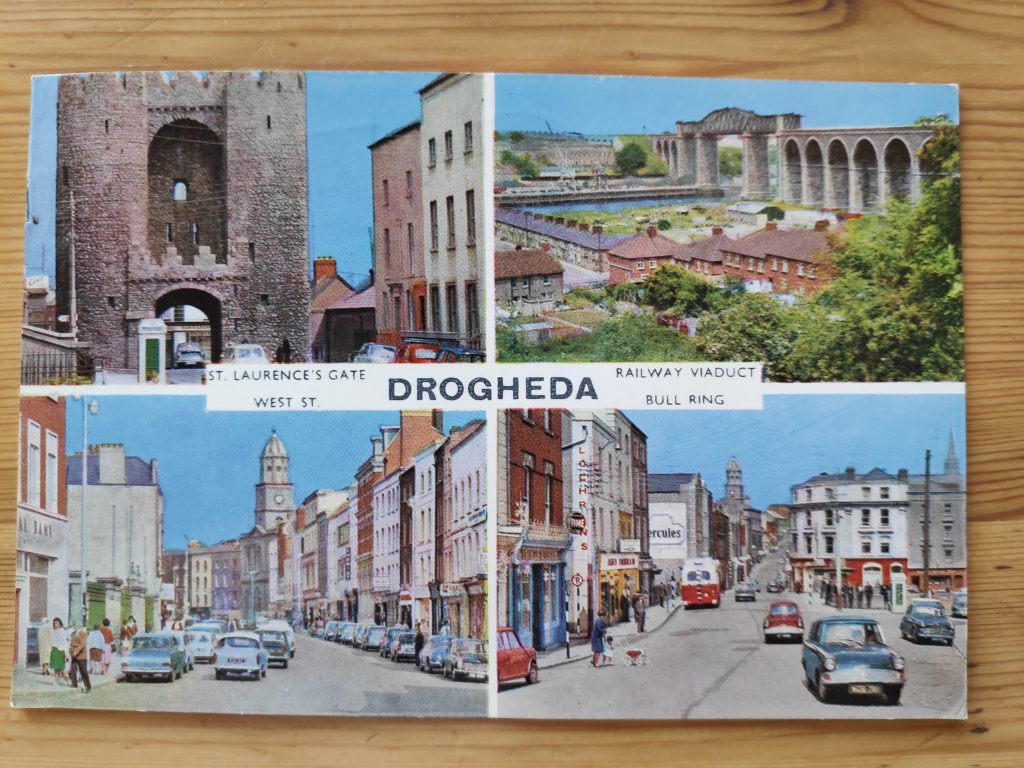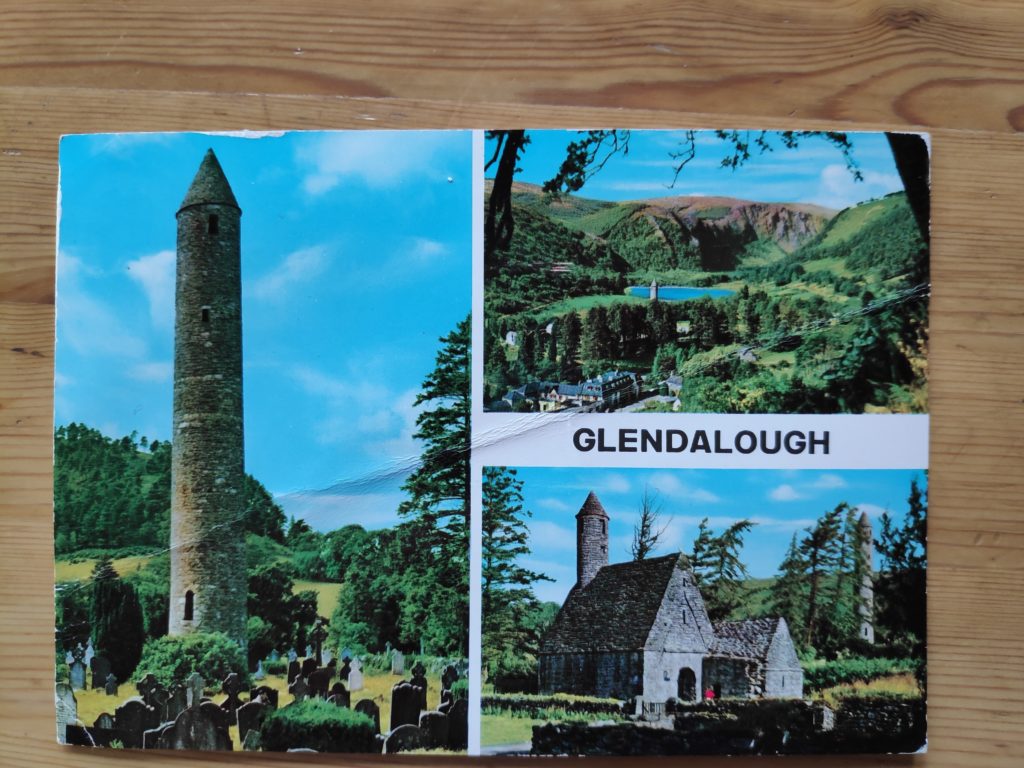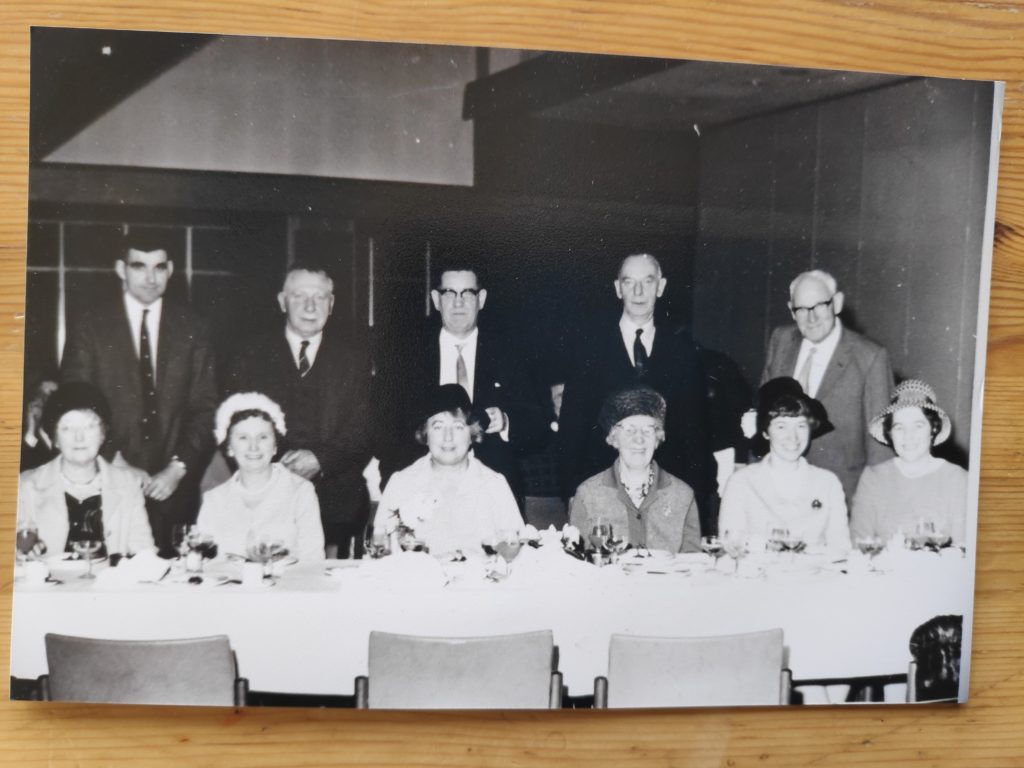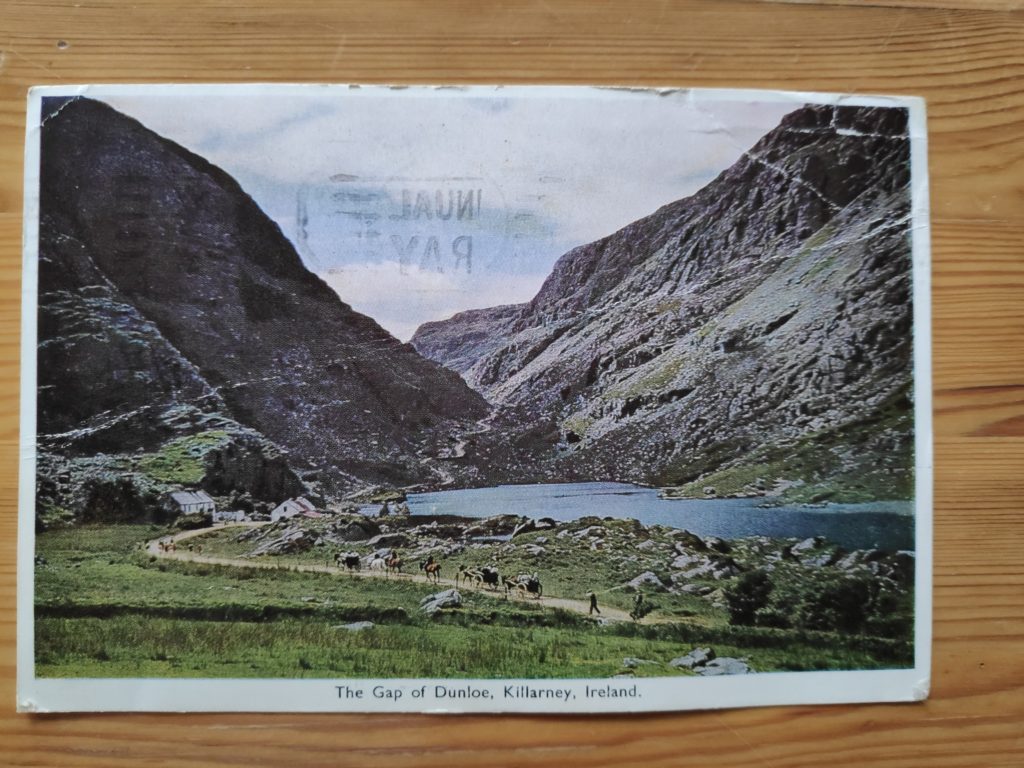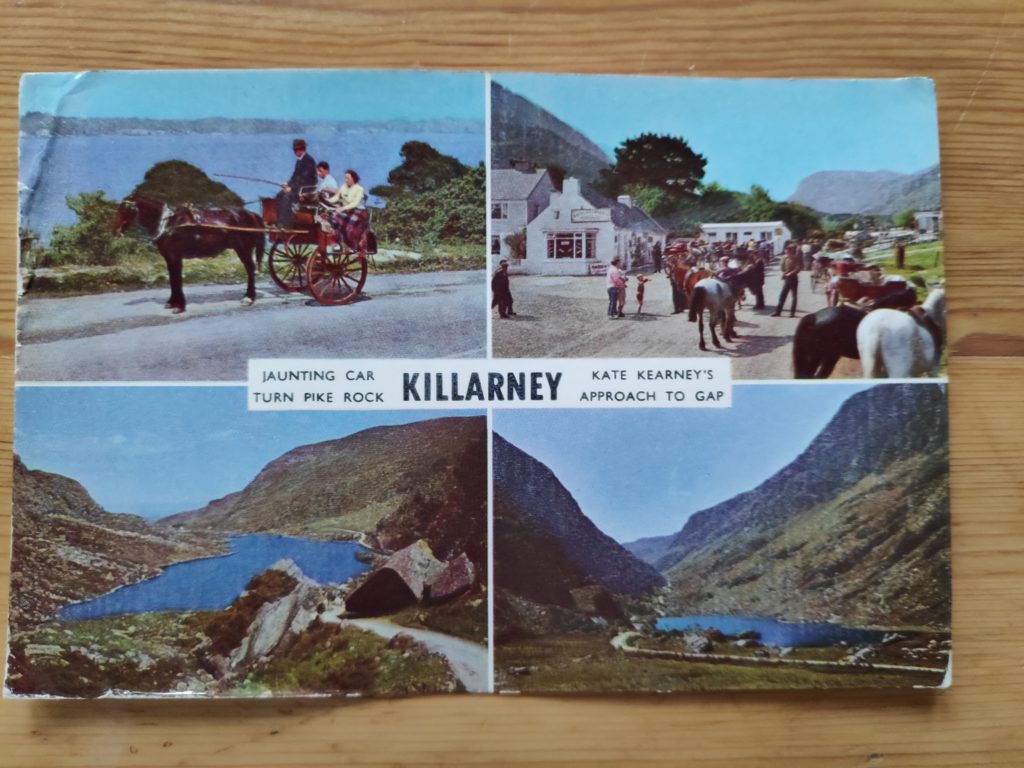We arrived in Glasgow by boat from Northern Ireland. As it was an overnight boat, I slept for a few hours and was up early in the morning. It was interesting watching our progress up the River Clyde. It was quite narrow already when I got up in the morning and we passed mostly the dockyards. This was the first time that I saw the sign “dead slow” and wondered what it really meant as dead people don’t move at all!
We arrived on the 29th of July and left again on the 6th of August. We stayed with a friend of our parents, Madge Cummings and her sister, Jessie Izzat. Madge had known our parents when they were living in Glasgow during the Second World War. Madge and Jessie lived in an apartment in an old building. The ceilings in the apartment were very high. In the kitchen they had a clothes rack which they pulled up above head height to dry laundry or towels. It certainly got things out of the way.
I remember learning to play Mahjong, the original game, in the evenings. Madge and Jessie also took us on several car trips and showed us around the Glasgow area, as well as a day-trip to Edinburgh.
The Trossachs
Scotland has many beautiful, wild areas, even close to Glasgow. We were taken to see Loch Lomond, drove through the Trossachs National Park and stopped at Stirling before returning to Glasgow, a drive today of about 150 km. This was a day trip by car.
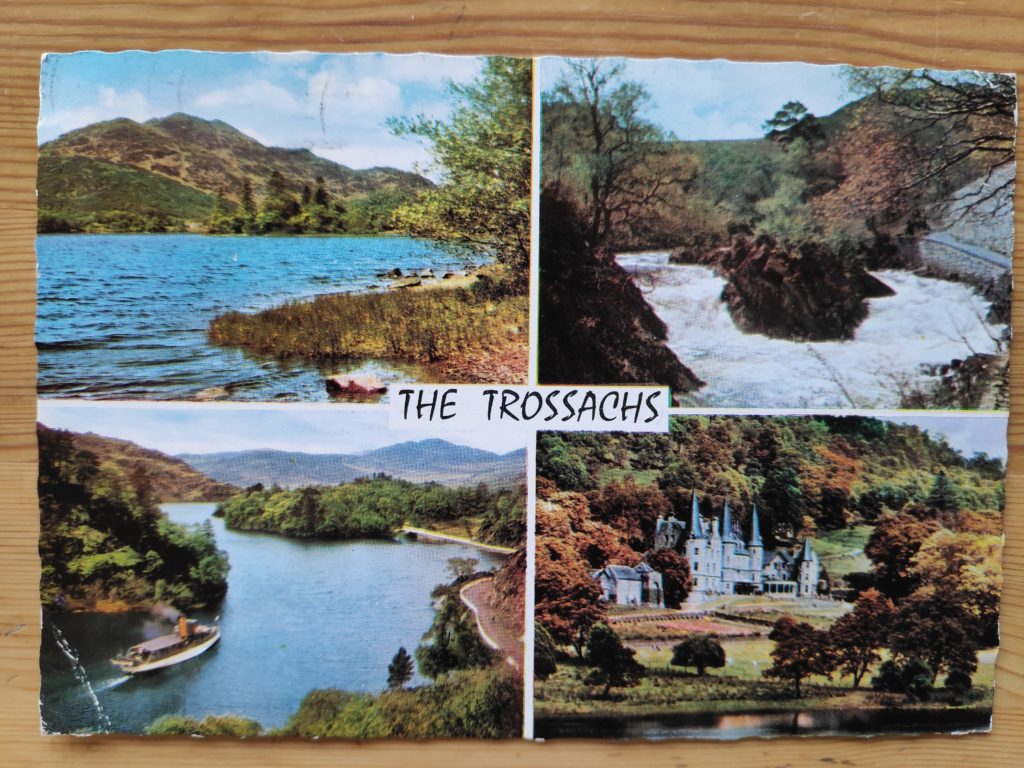
Stranraer
One day we took the train to Stranraer where I had a penpal. We visited with her and her parents. They took us around the area, showing us the local sights, treated us to lunch at a hotel, then we headed back to Glasgow by train. Stranraer is where there is a car ferry between Northern Ireland and Scotland as the distance between the two is very short here.
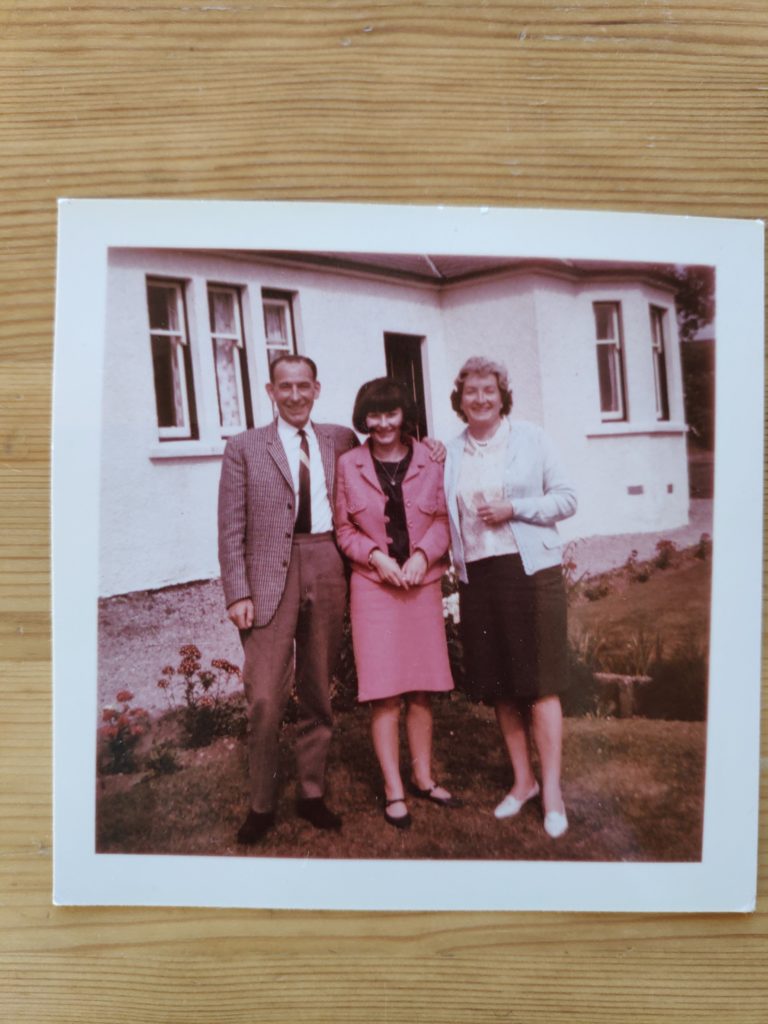
Edinburgh
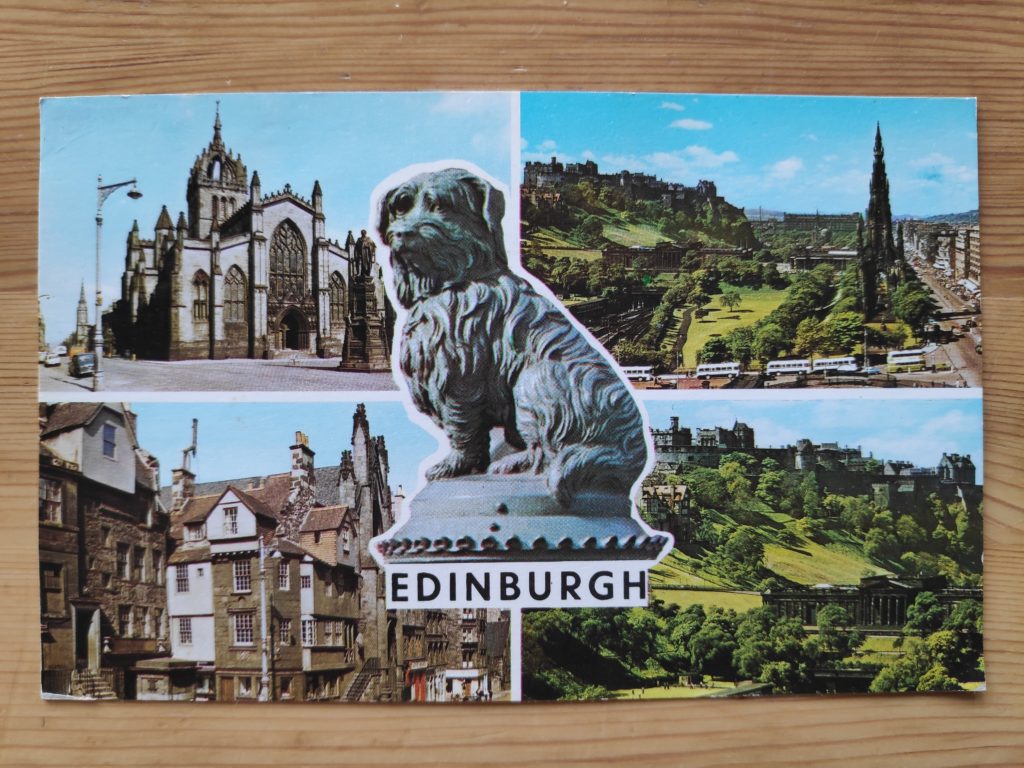
From a postcard: “Dear Granny, Hi! We got to Edinburgh though the day we went it poured the whole time. In spite of the rain we toured Holyrood Palace and Edinburgh Castle. Jessie, who had her car, showed a little of the city, but as it was raining constantly and we weren’t prepared for it, we didn’t stay too long. It is pouring again today, so we will do our washing this afternoon. Your granddaughters, Aileen and Patricia” (Written by me)
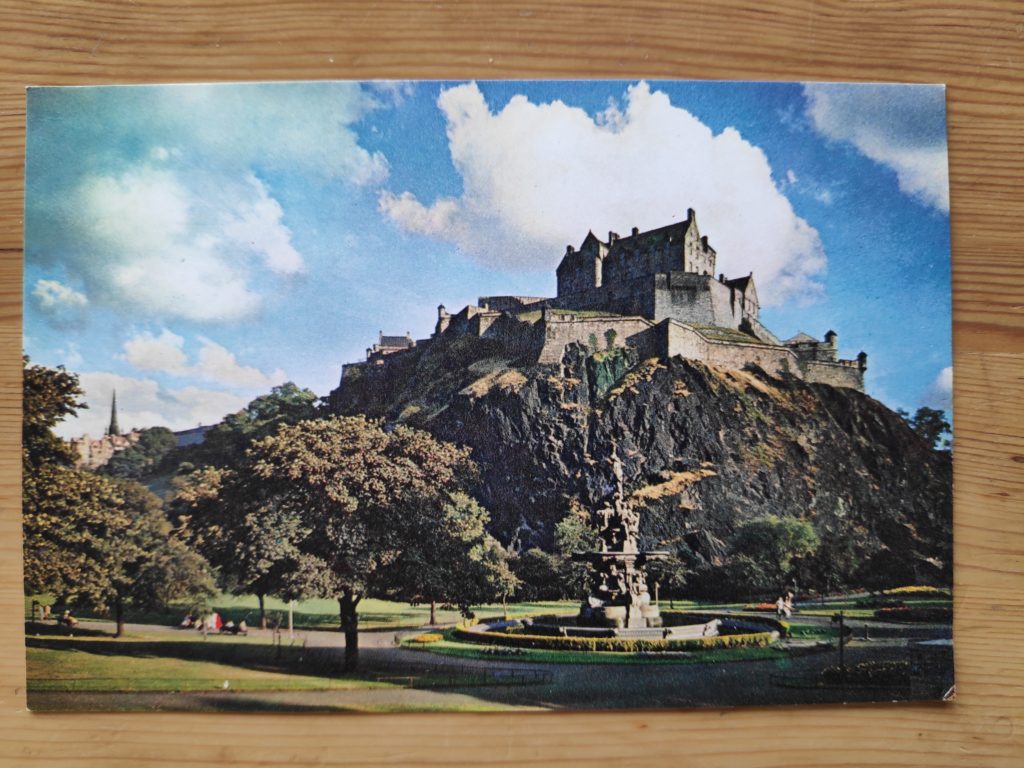
One of the challenges we had when travelling for so many weeks at a time, was having to put up with the inevitable bad weather. I particularly remember it being terribly wet the day we went to Edinburgh and not getting out of the car much at all. Jessie was very good to us, but there wasn’t anything she could do about bad weather, except be flexible with what we did.
When I read my sister’s summary of the trip, I find listed a lot of things that I have no memory of at all. For example, a train to Gurrock and a steamer across the fjord and around a peninsula to Tarbert.
There was also a car trip to Prestwick Airport and Ayr, which are south of Glasgow.

